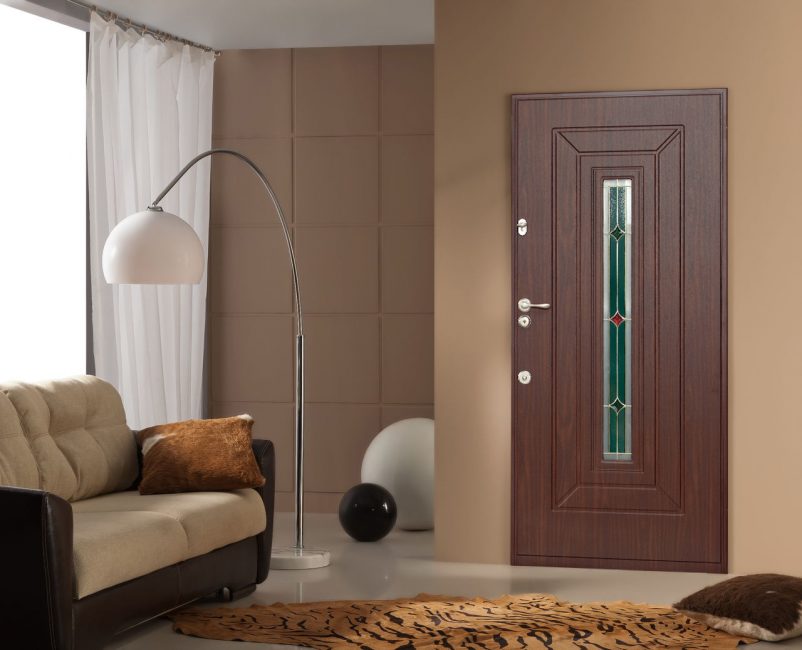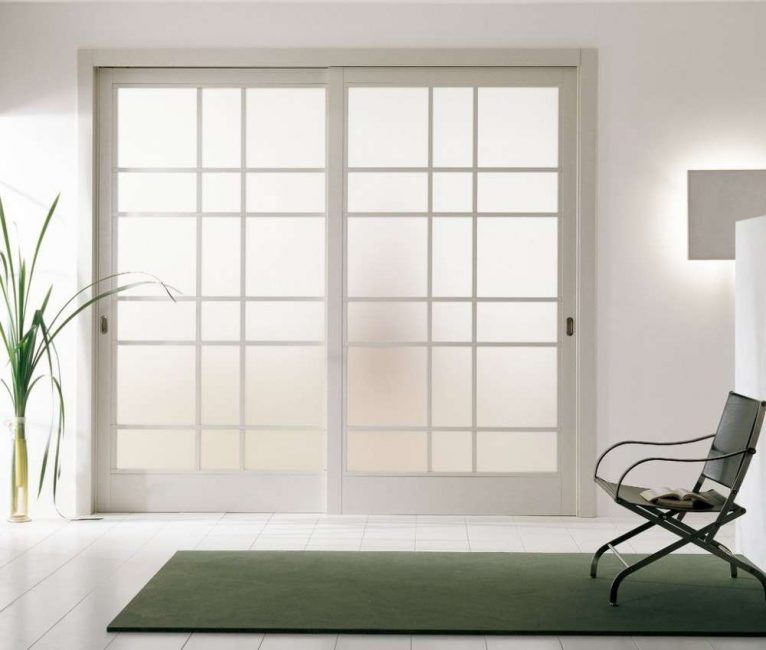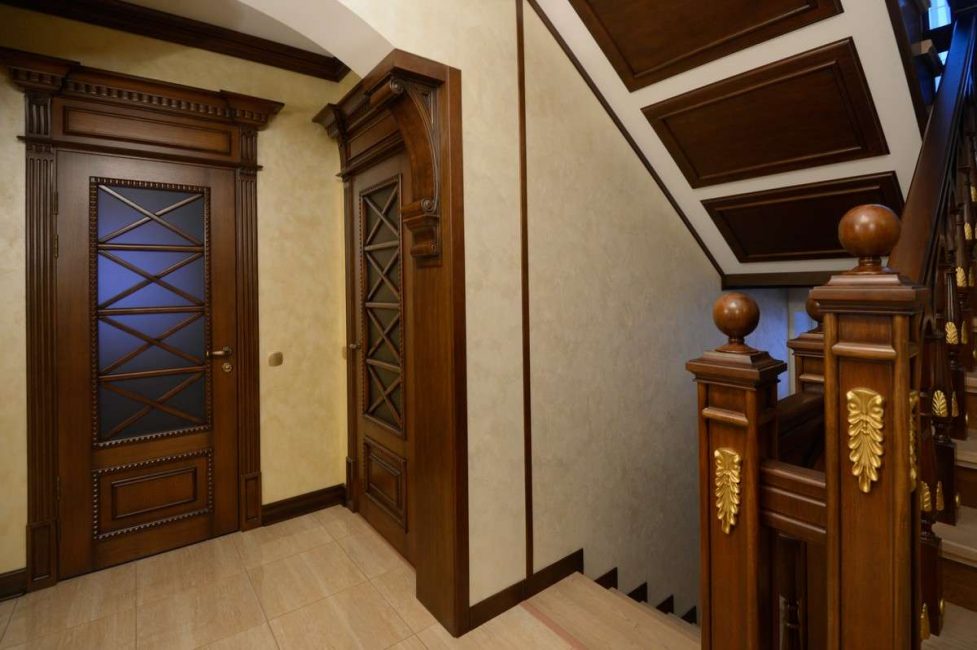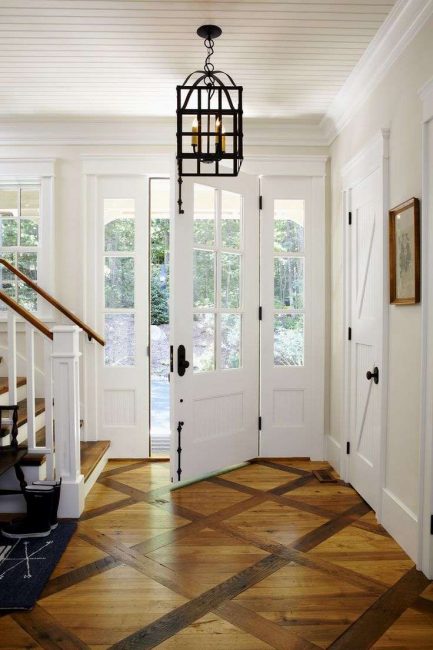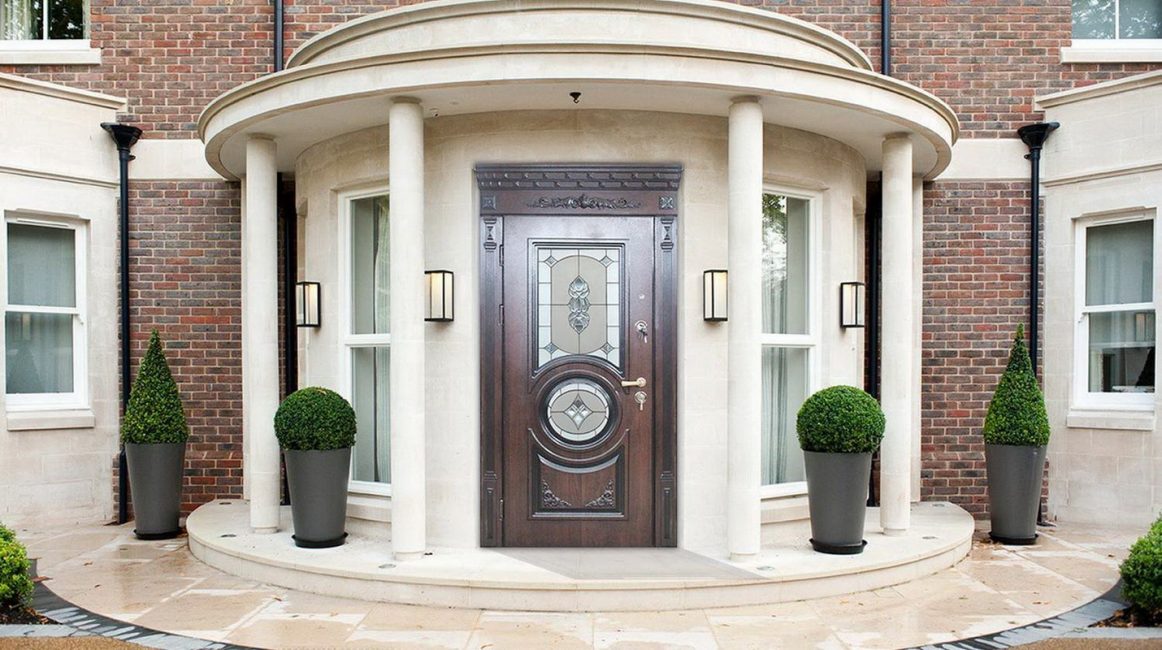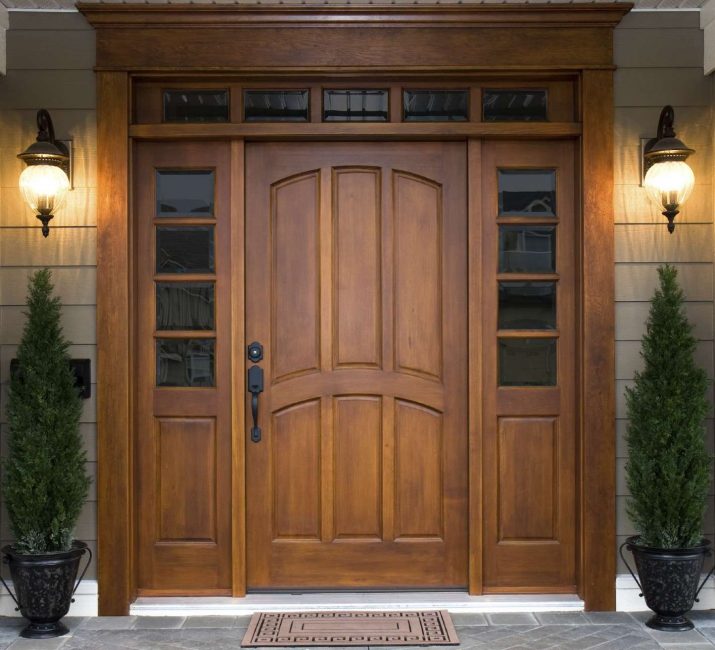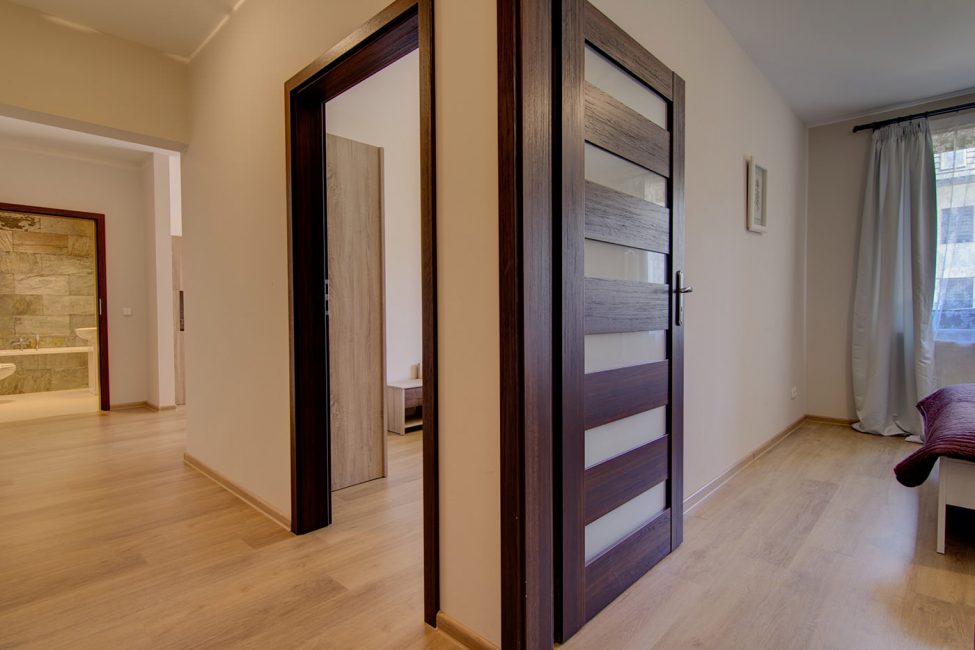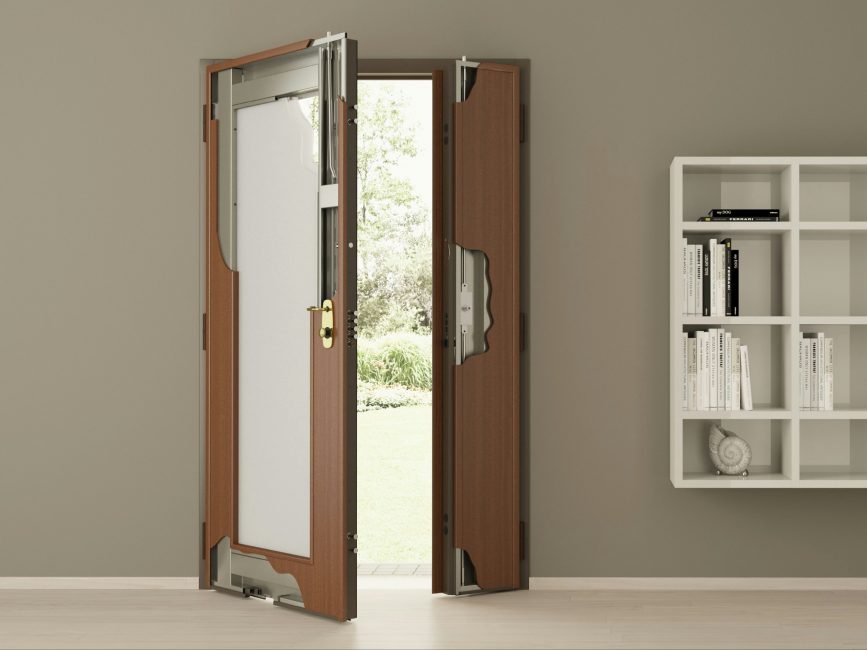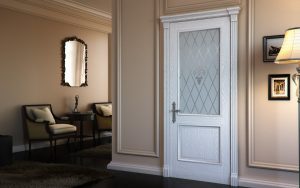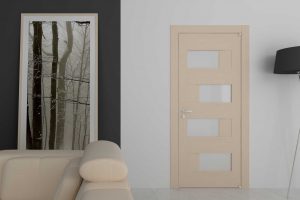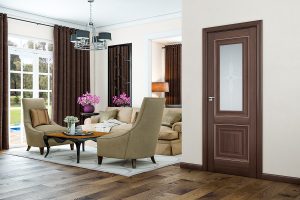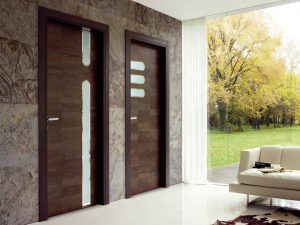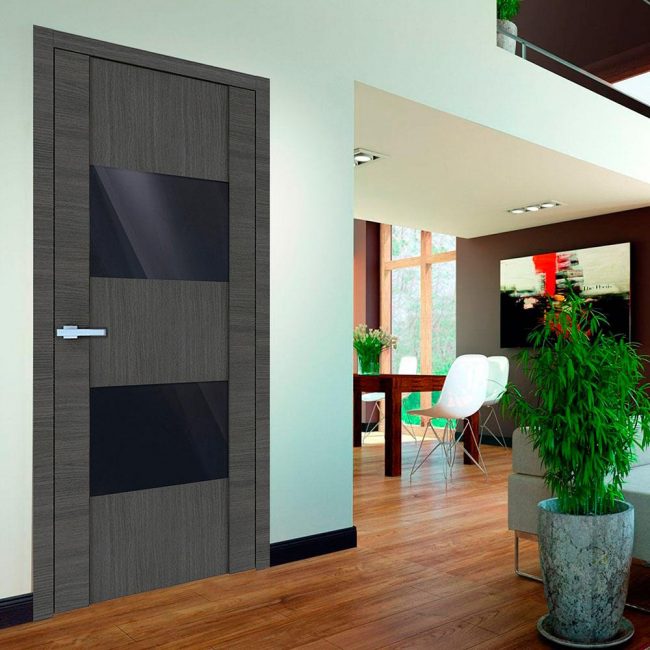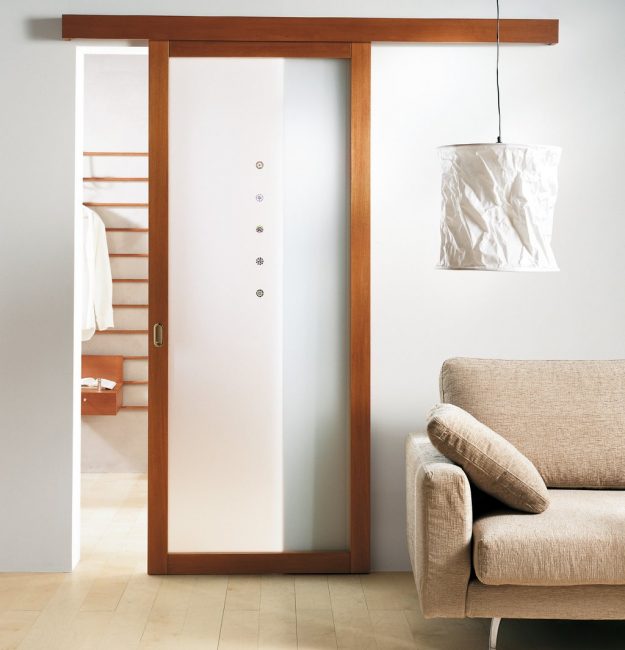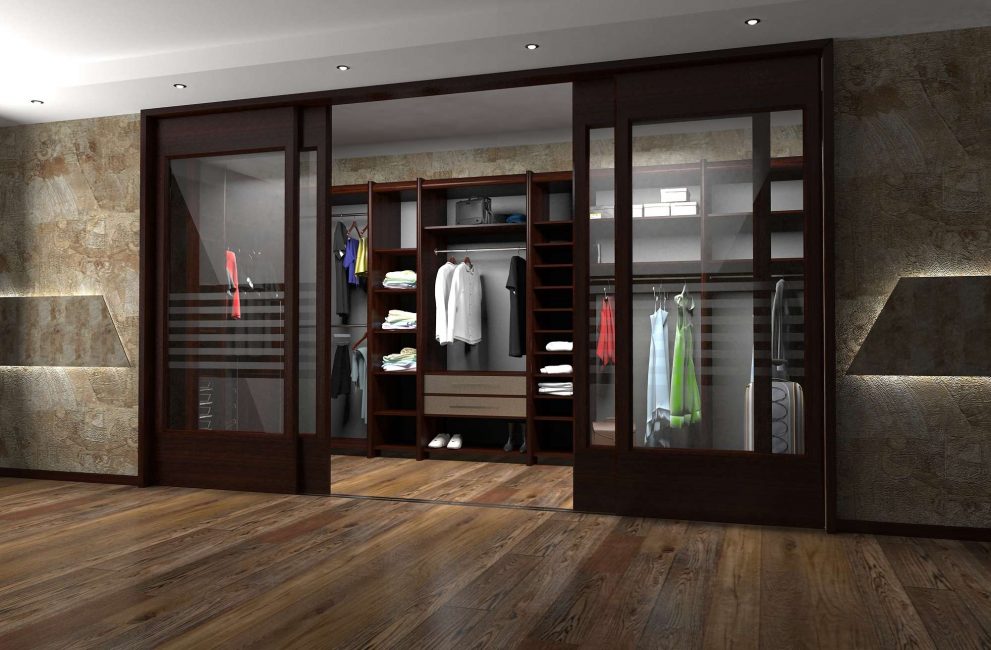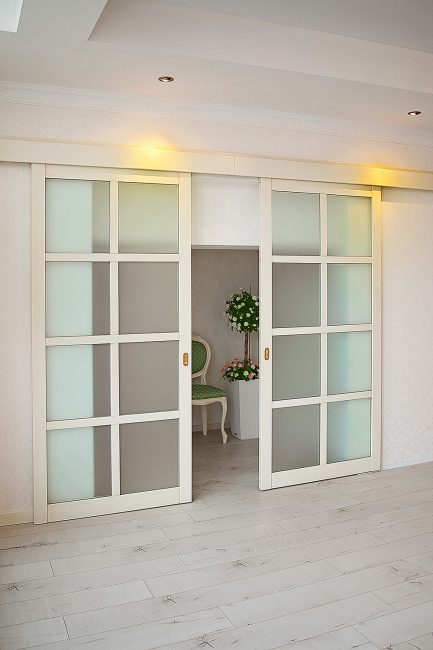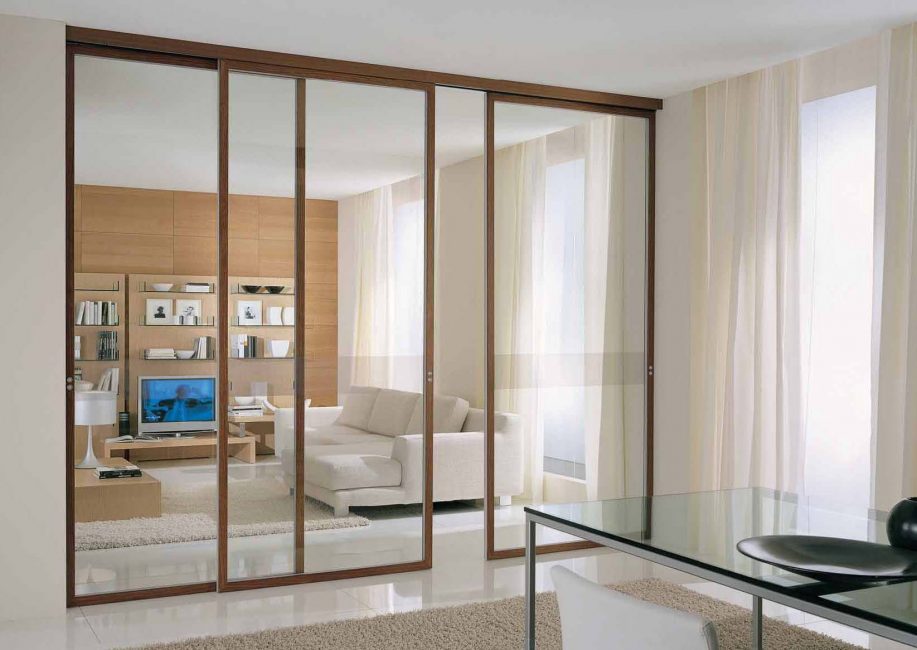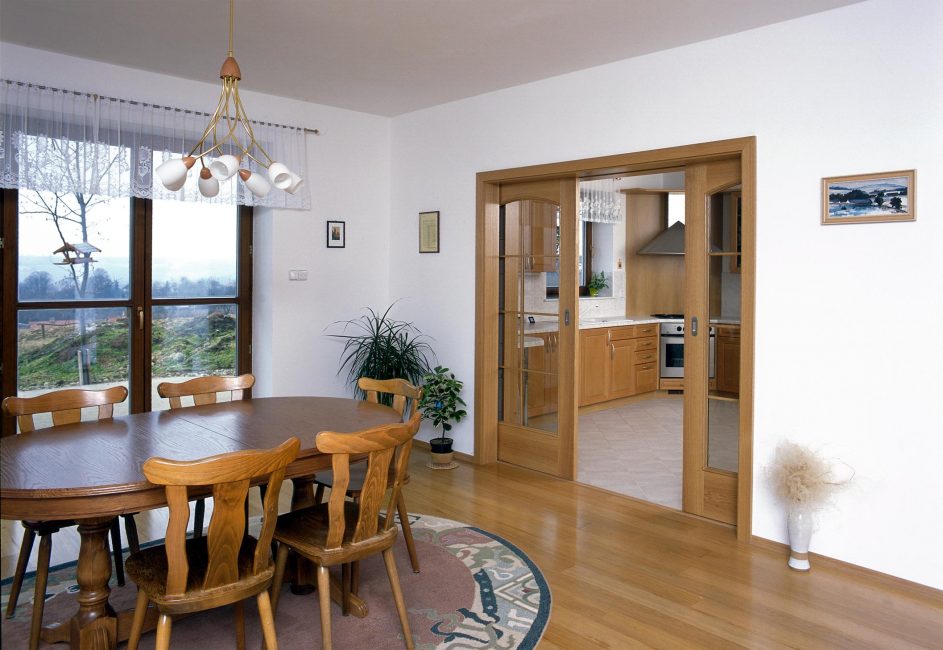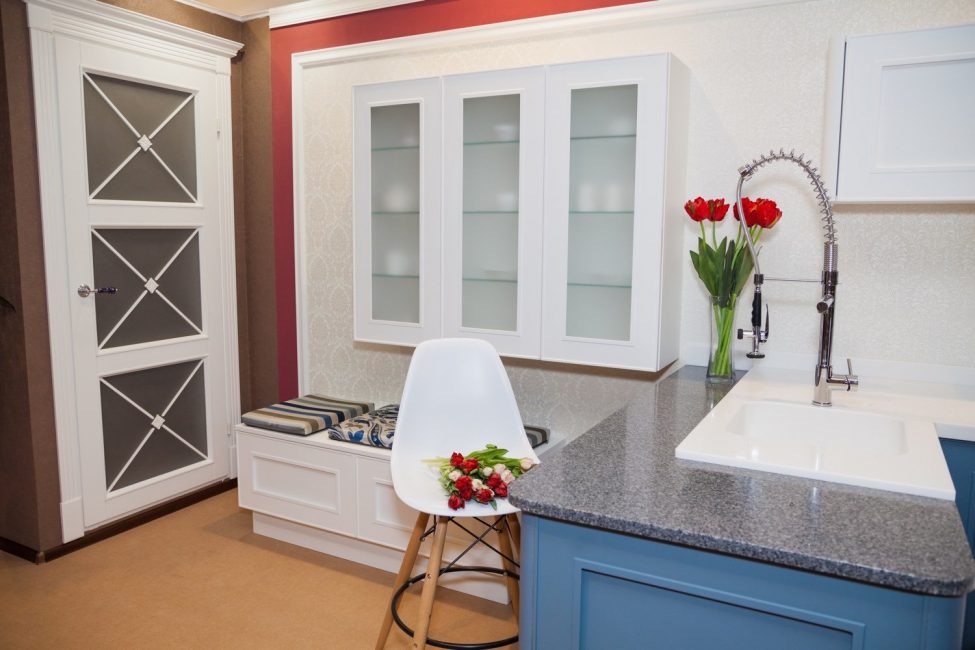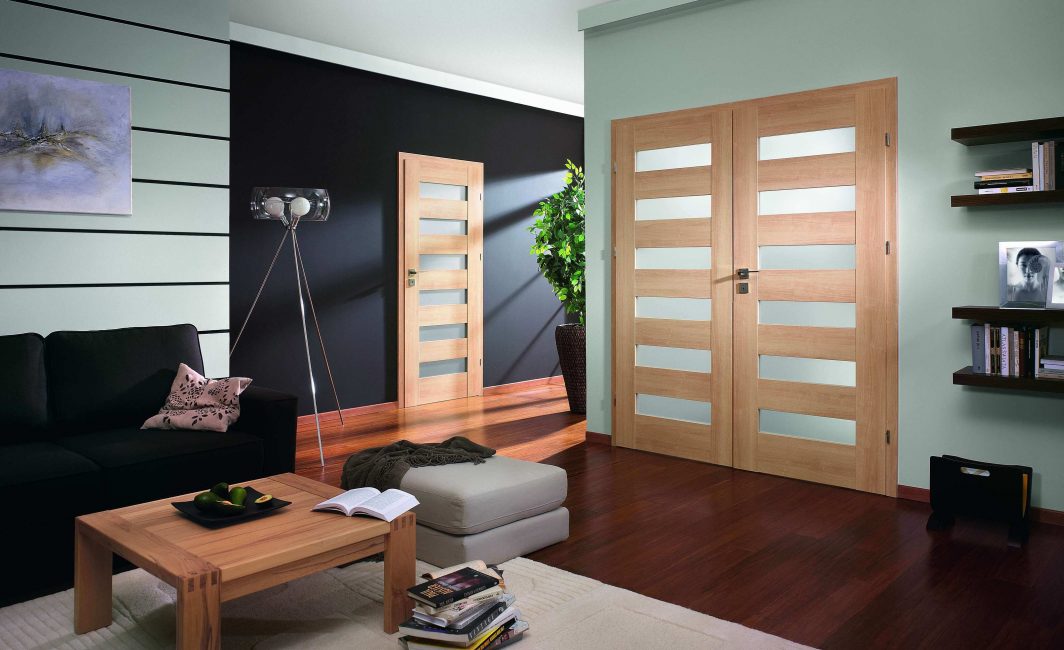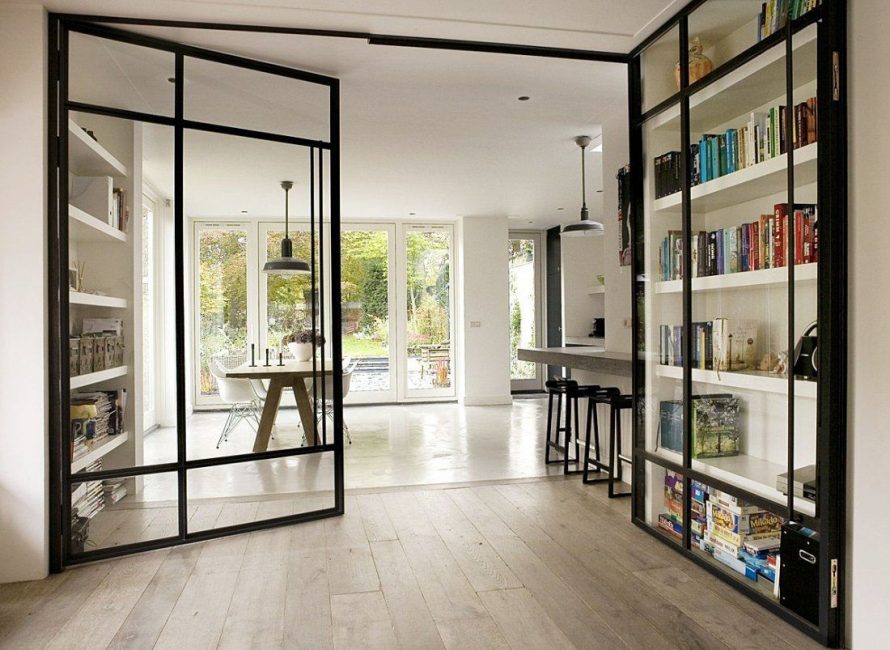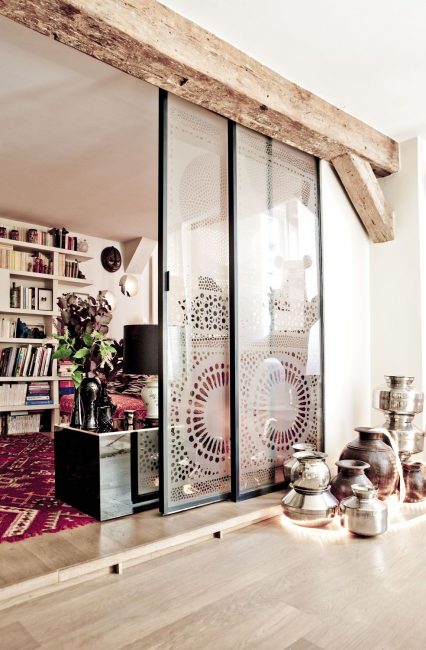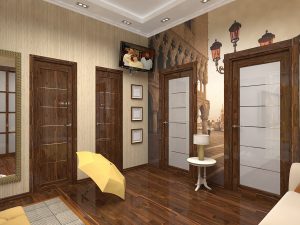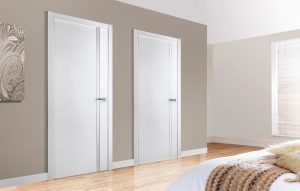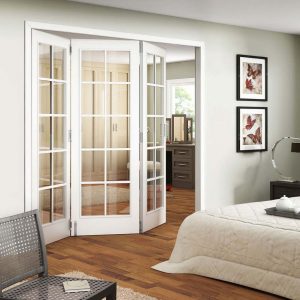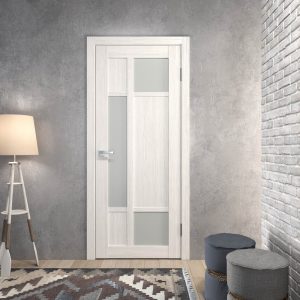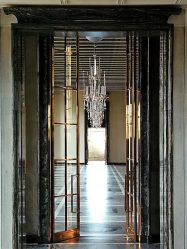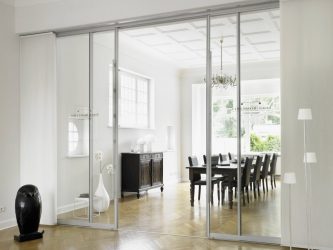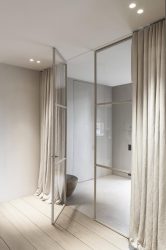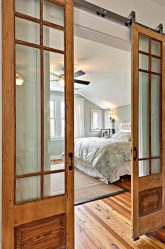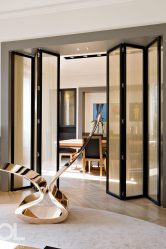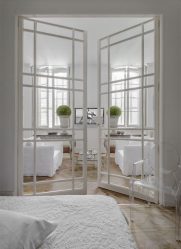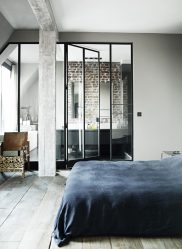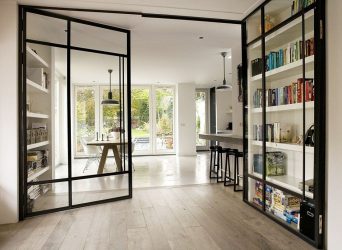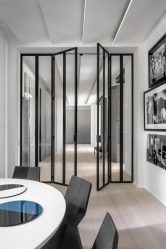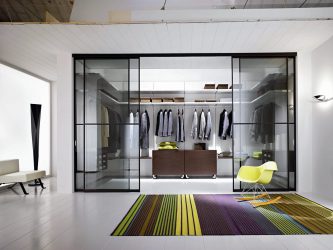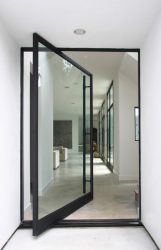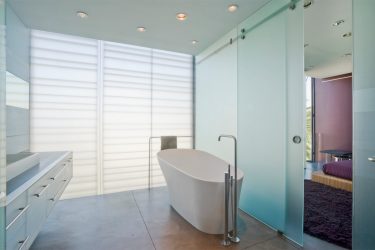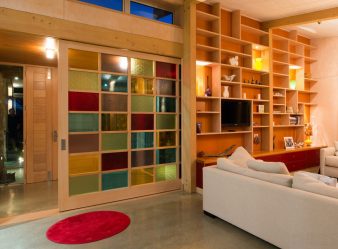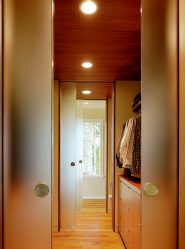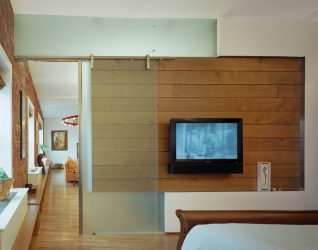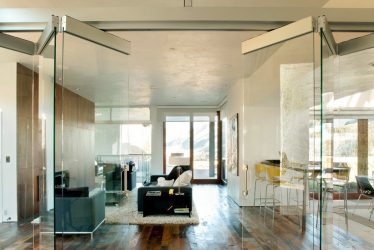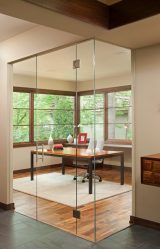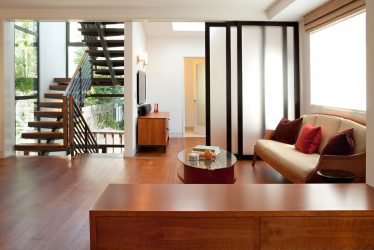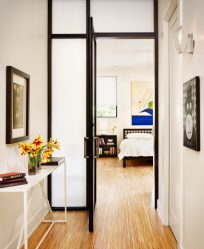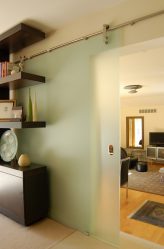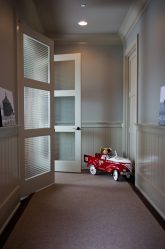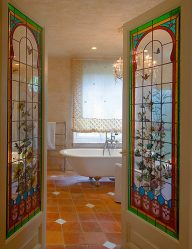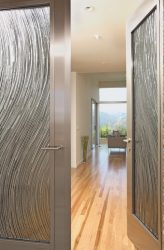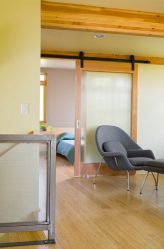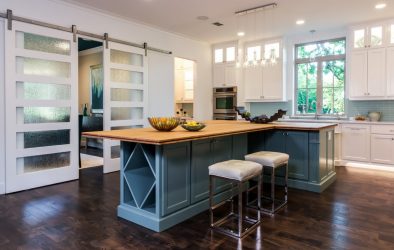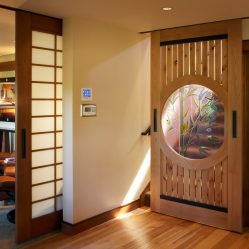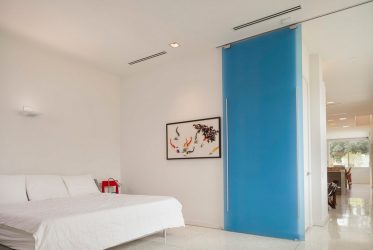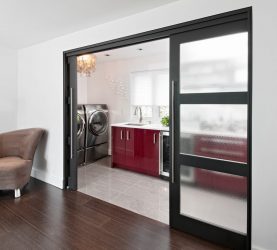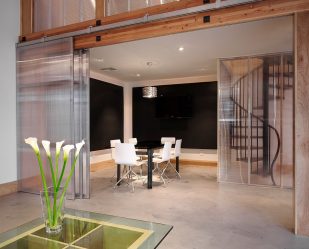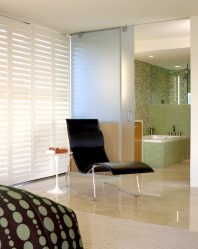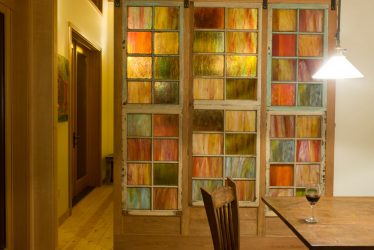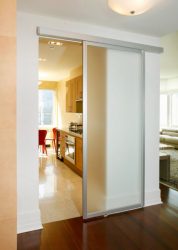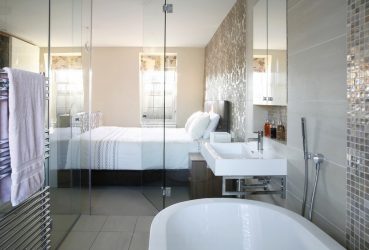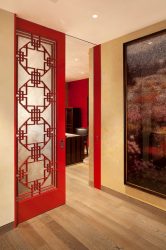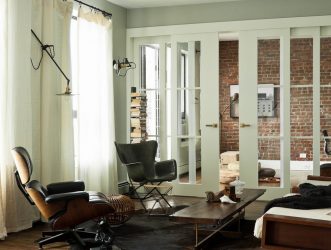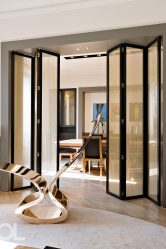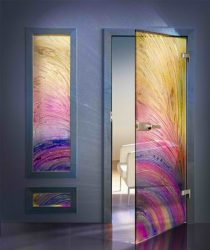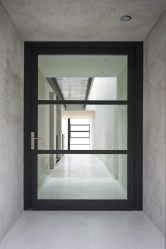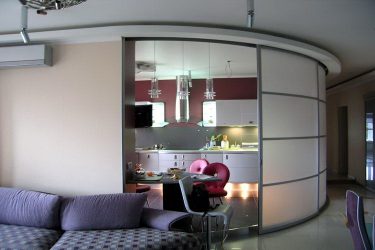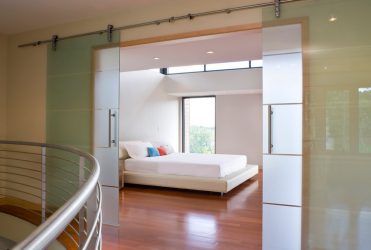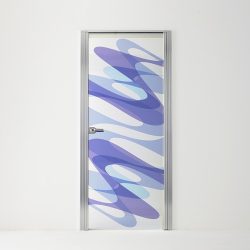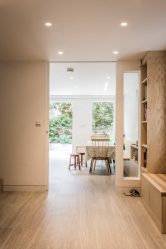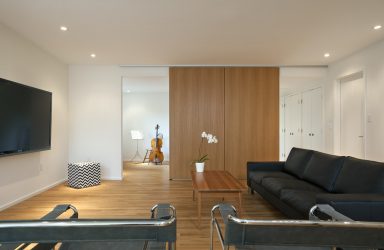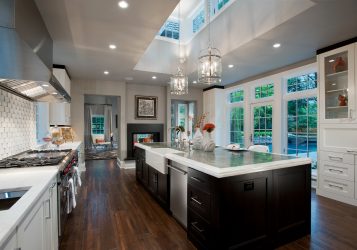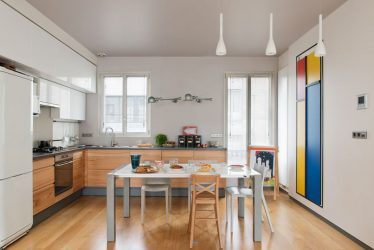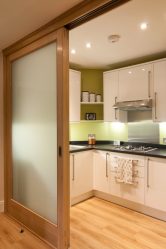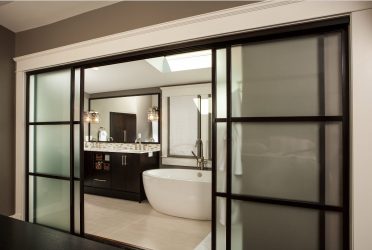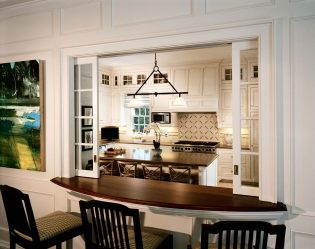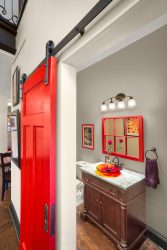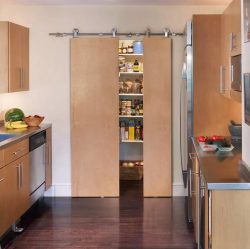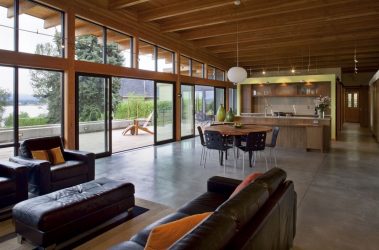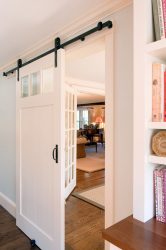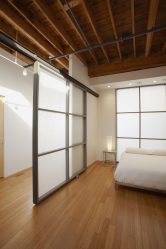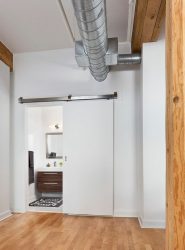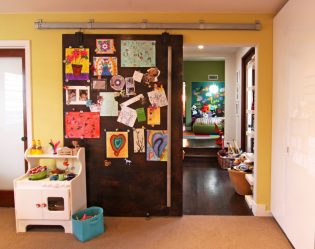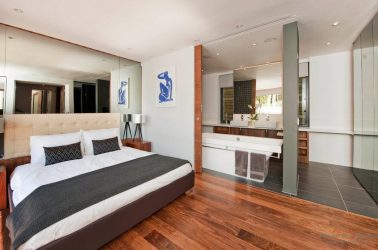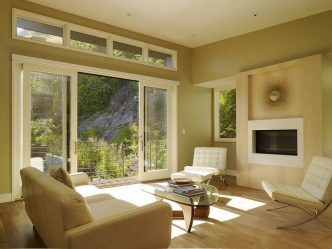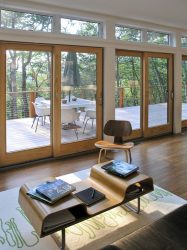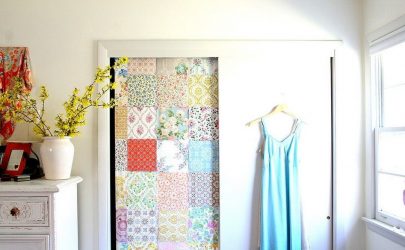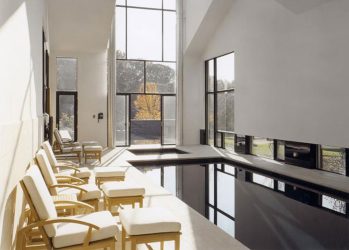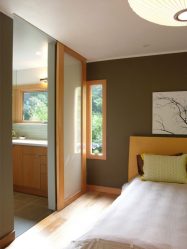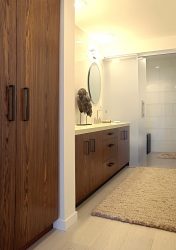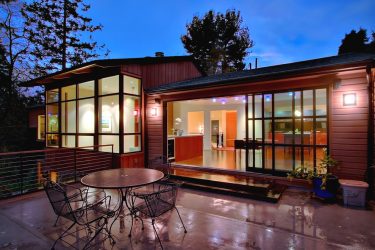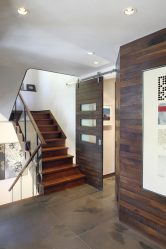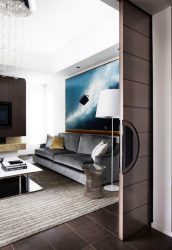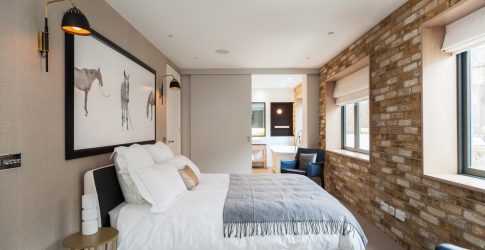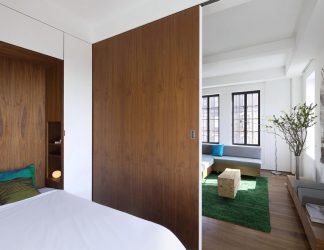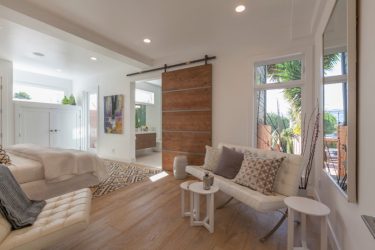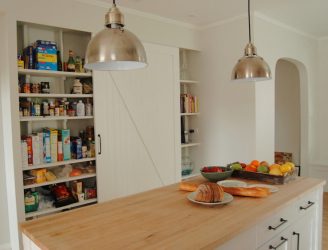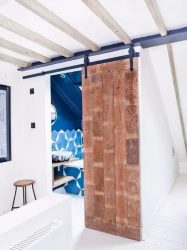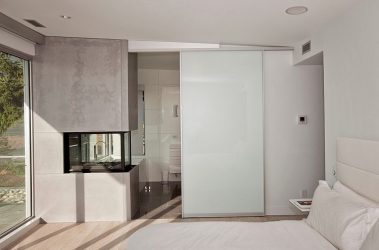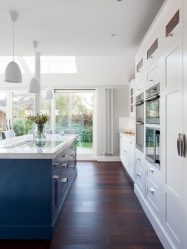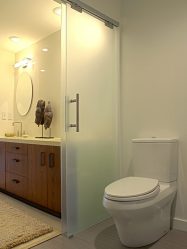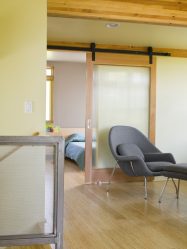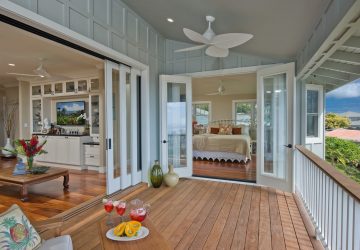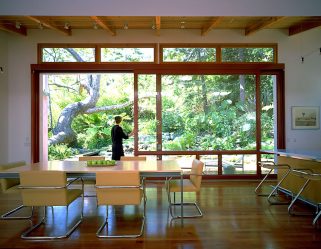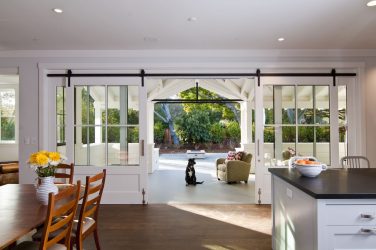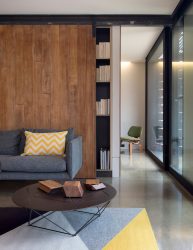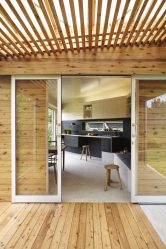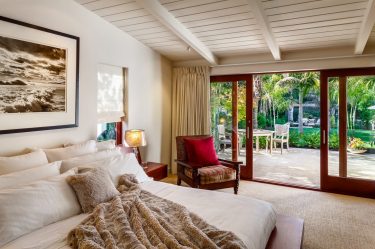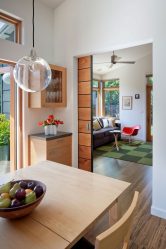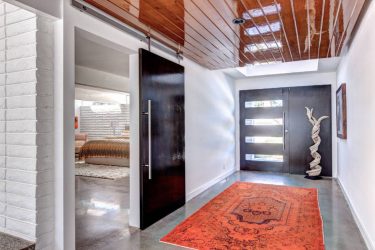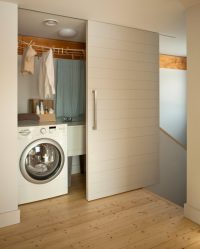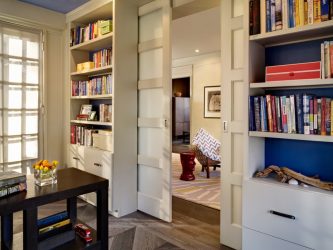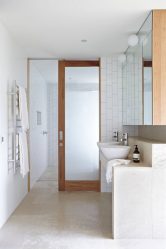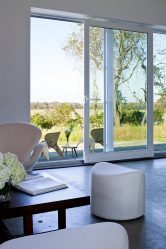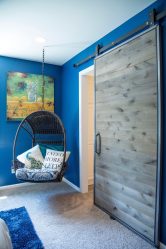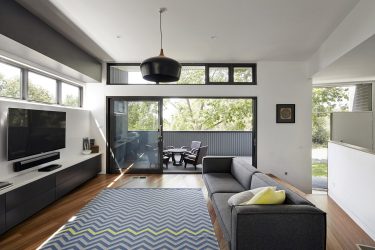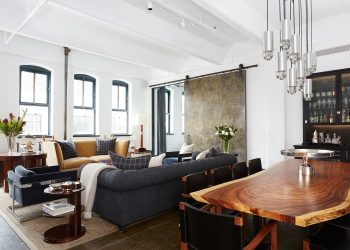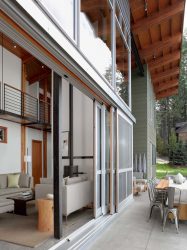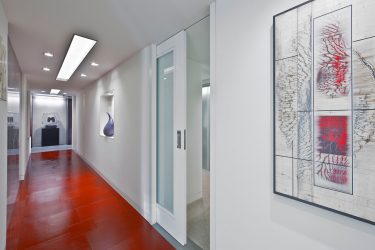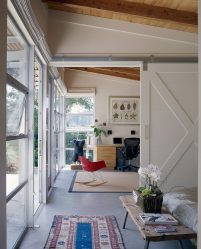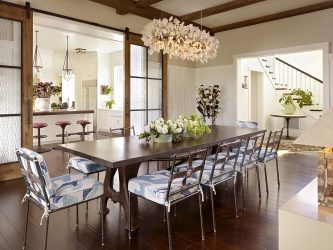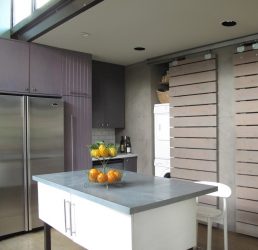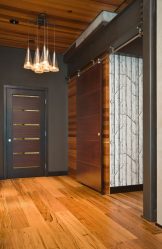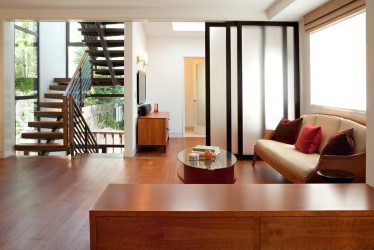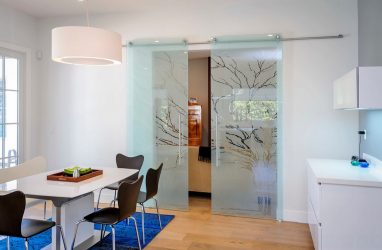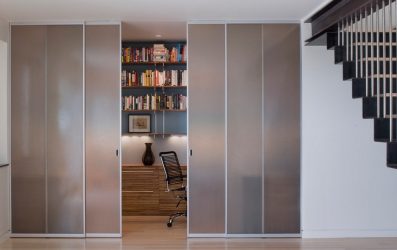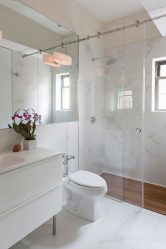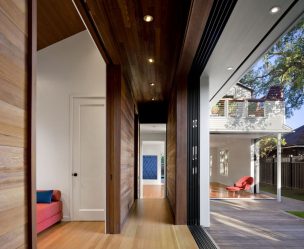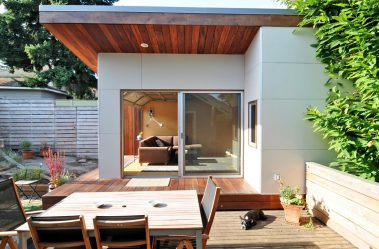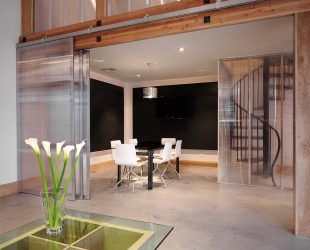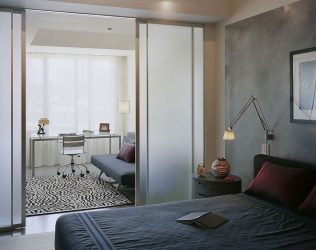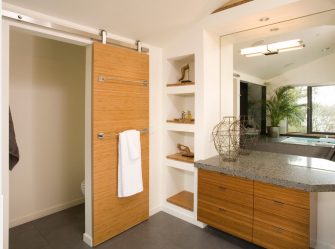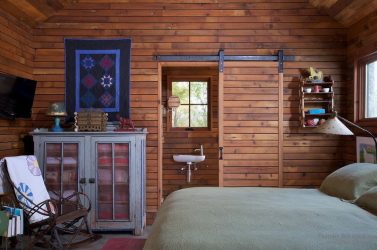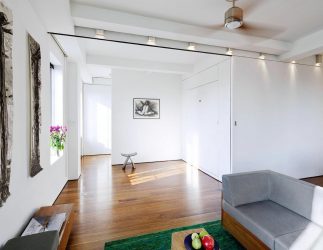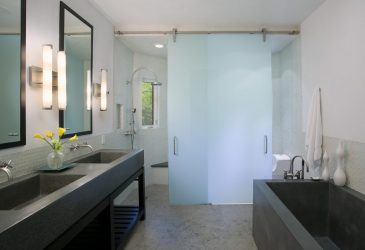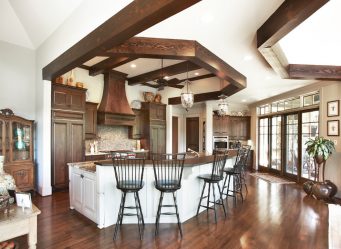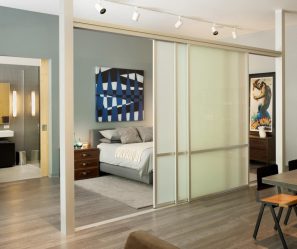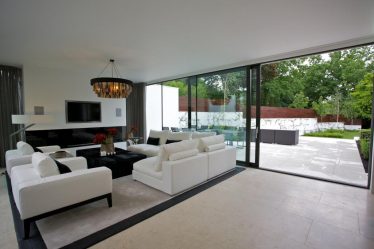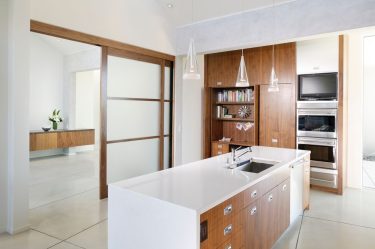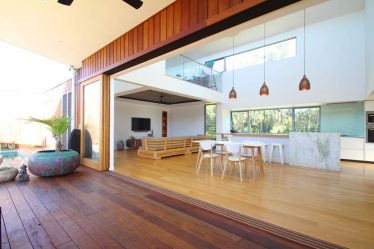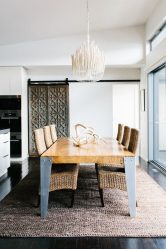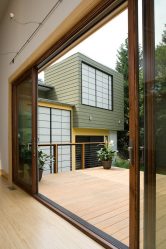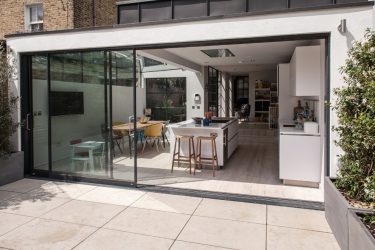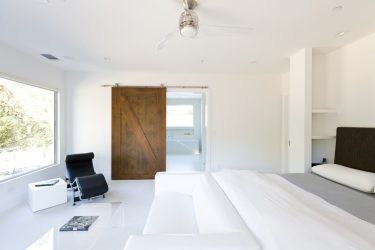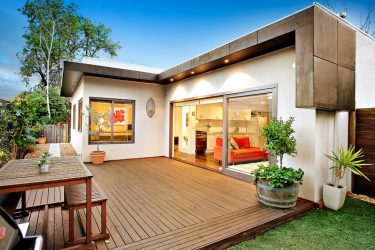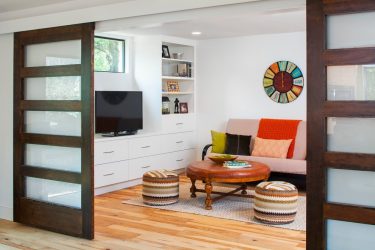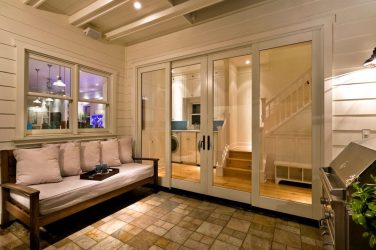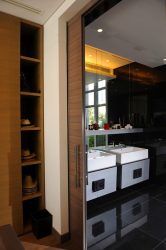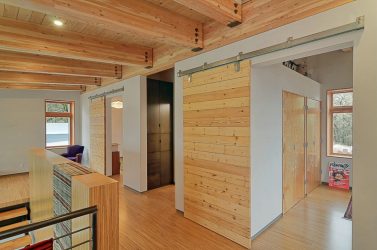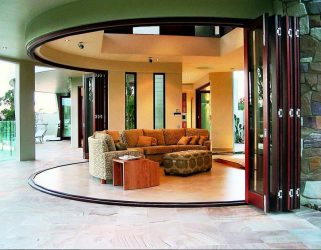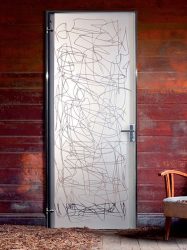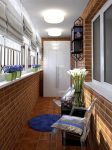
Doors with glass, photos of which usually look very impressive, are different. First decide what they are for. It is very important to deal with the material of manufacture, so that later they can long meet your requirements.
Content of this article:
Entrance and interroom, from different materials, with the different glass used for inserts. In the interior, they can perform various functions:
- aesthetic - A canvas with a glass insert looks much more interesting and impressive than the whole, even with patterns;
- visual - so, in the case of the front door, through the glass inserts you can look out, without using the peephole;
- lighting - light and a door can penetrate through the glass, thus, will act as an additional source of lighting.
The first function is relevant for interior design, too, the other two - only for the input. In any case, so that it looks beautiful, spectacular, fits well with the interior, served for many years, you have to grasp a little of what it may be and what it will be different from others.
Materials
AND glass, and the fabric material has different properties that need to be considered.
return to menu ↑Plastic
Plastic are quite common, and are used both as input and as interior. They are usually made of polyvinyl chloride, they have the following advantages:
- Price. Plastic is inexpensive, like most synthetic materials. In fact, plastic will be cheaper even than the frame of chipboard.
- Resilience. Plastic does not suffer from water, is not afraid of temperature changes, does not fade in the sun. It is not eaten by insects and rodents, it does not absorb liquid.
- Variety of colors. Despite the fact that plastic is usually made white, you can buy any other color - from counterfeiting natural wood to black.
- Thermal insulation and noise insulation. The plastic has a seal that fits so tightly that it provides the best noise insulation possible - if the plastic door leads to balcony, it is enough to close it so that the street noise is completely cut off. It is the same with thermal insulation - heat does not go away through serviceable fittings at all, even if the canvas consists almost entirely of double-glazed windows.
Of course, there are also disadvantages:
- Simplicity. The plastic does not make patterns, it is not textured, it looks cheap. You can’t put it in classic styles, otherwise it will look alien.
- Lack of mechanical stability. Plastic cracks easily if you hit it hard - and it's hard to repair it.
- Low security class. In the case of interior doors it does not matter. But if we are talking about input, everything changes - plastic is easier to open than wood or, especially, steel.
Plastic with glass is used:
- as input - not too often, but if you have a private house and the main line of defense is at the fence level, no one will prevent you from placing plastic;
- as interior - sometimes, because they still look not as beautiful as the others;
- as a balcony or on a black run, this is a very common application, since security does not suffer from a low level of protection, but it provides sound insulation and heat insulation.
Tree
Wooden are also different - it is either a solid canvas or frame. They look similar, but they are made differently and their properties are also different:
Shield
Made of a frame that is filled with a compactor, on which a chipboard sheet is hung on top or MDF. Cost inexpensive, look good. Lightweight, which means ease of installation, as well as very flexible - if you put a good compactor in such a door, its sound-proofing and heat-insulating qualities will be no worse than any other.
Paneled
In this case, a solid shield is not hung on the frame - thin boards and panels are inserted into the voids in it. This is more reliable than the shield, looks a little more interesting because of the relief, which can be very bizarre. But both thermal insulation and sound insulation cannot be expected from it - the heat and sounds penetrate through the places where the panels are attached to the frame.
Tsargovye
Thin horizontal slats are hung on the rectangular frame frame. It looks minimalist, beautiful and in practice very reliable. In addition, this shit is easy to repair - if one rail fails, you can replace it with another. But such doors also do not succeed in sound insulation and heat insulation, and also differ in weight - it can be difficult to install them.
Molded
On the frame, in which two vertical wooden blocks are fastened, an additional thin strip of glass is hung - also vertically. The result looks strictly and interesting. Distinguished by durability, normal sound insulation and heat insulation, but also very heavy - you usually have to bring them into an apartment with the help of a pair of movers.
Solid array
The only design that is made of solid wood - no frames. Very reliable, because the tree is difficult to damage, very heavy, because it usually weighs too much. It is distinguished by beauty and nobility, but it requires complex and costly processing in order to acquire sustainability, therefore it is expensive.
Tree - or materials that imitate wood - great for classic interiors. It fits into the classics, in English style in country music and provence, at Scandinavian and Finnish styles.
Metal
Metal do not put between the rooms - it is too expensive, and besides, it is not convenient because of the severity.But as input they do not know their equal. They have the following advantages:
- Durability. If plastic serves for ten years, and wood is fifteen, then metal can stand in your house for half a century.
- Security. The metal - the highest possible class of protection.
- Resilience. The door of the metal is not afraid of any moisture or pests or fire.
Metal doors are expensive - this is one of their main disadvantages.
They are also very heavy, which makes installation difficult and, even worse, they have very low sound insulation and thermal insulation values. Often, only an additional layer of insulation helps to prevent the penetration of cold and extraneous sounds into the house - and from time to time it has to be changed.
It will be interesting to you:
Entrance metal door to the house (175+ Photos): From selection to decoration
Interior Doors in the interior of the apartment (305+ Photos): Stylish and modern options
White doors: 210+ (Photo) Design in the interior. Variants that suit everyone
Entrance plastic doors in a private house (145+ Photo): How to make and securely and beautifully?
Glass
Glass for inserts can also be very different - there are numerous processing methods, the results of which differ in order.
So, for large inserts it makes sense to use the following types:
- Triplex. Thick glass, which is obtained by gluing several sheets together with a transparent film. It looks no worse than any other and is often used for frontal windows of cars. It is almost impossible to break it, and even if it happens by some miracle, it will only crack and not crumble.
- Armored. Inside such a glass is a metal grid, which makes it look like it is broken into small squares. It is impossible to break it in principle - several squares can fly out on impact, but nothing else will happen.
- Tempered. Such glass is obtained when the most usually sheet is calcined in a special furnace. It is difficult to break it, but if it does, the fragments will be large, with blunt edges. Less reliable than reinforced or triplex, but cheaper.
Other types of glass are suitable for glass inserts of different sizes - they break and, accordingly, a burglar can penetrate through them if they are larger than recommended.
Among them:
- Acrylic glass. In fact, it is a transparent plastic - thin, light, transparent and almost indistinguishable in appearance from the present. When you try to hit it cracks, but only if the blow was very strong. Easy to process, easy to paint, cheaper than any other variety.
- Leafy. This glass is made from sand and used it from time immemorial. It is transparent, may be uneven, it has no special properties. Easily beats on small fragments that can penetrate the skin. It is used only for the smallest inserts, since it is dangerous for large ones.
- Float. Such molten glass is poured onto a hot metal, as a result of which it turns out to be absolutely smooth. It is used most often - it beats badly, but costs more than acrylic.
- Polycarbonate. It is stronger than acrylic by a hundred times, surpasses most varieties of glass in strength and most other characteristics. It does not look different from any other transparent glass.
Construction features
Doors with glass inserts differ in design, and together with the design it differs in how they affect the overall atmosphere in the house and how they fit into the interior.
return to menu ↑Swing
The first of the groups is the doors that just open when you push them. They can be on themselves or from themselves, look very traditional. Most of the doors that can be found in people's houses are swing doors.
They are:
- Ordinary. These doors open from yourself or yourself, take up a large amount of space and look completely familiar. Entrance doors in the apartments almost always belong to this variety - so it comes out cheaper and more reliable.
- Bivalves. They are found in private houses, decorated in a classic style. They take up even more space than a single structure, look pompous and massive. Inside the house, they can be placed only in large rooms - for example, in the dining room, if you are going to receive a couple of dozen guests in it.
- Swinging. Open to both sides, take place in both rooms, which go out. This design does not apply to entrance doors, for interior doors it is considered extravagant and is only installed on demand of style — for example, swing doors look good in hi-tech.
- Stables. They remind of westerns - the door is divided into two doors, you can open one, but not open the other. They are used either to complement the country style, or for practical reasons - when there is someone in the house who cannot be allowed to leave the room, but who needs to be watched. Of course, the entrance stable doors do not exist.
Often the door with glass inserts is installed as an analogue of the stable door - it looks better, and it takes up less space.
Sliding
Such doors are used either in private houses as entrance doors, or as interior doors. Possess two doors that are attached to the guide and move apart when needed. They practically do not take places, because of the presence of glass, they look even more extravagant than usual.
They allow:
- to save space is important if you have a small apartment;
- to be original - plus fit perfectly in the Japanese interior.
Of the disadvantages:
- the mechanism can quickly fail if it is not looked after or used too actively - and then you have to look for the master;
- you will not make a heavy sliding door - therefore, you will have to forget about a solid solid wood, and use plastic instead of glass;
- Sliding door does not provide insulation from noise and cold.
But still the coupe doors look so good that they still put them, despite the flaws.
Roto and folding
In addition to all the swing doors and sliding doors, there are two more types:
- Folding, they are also "accordions". They represent a canvas connected by loops - it can have up to five sections. When someone needs to go through the doorway, he simply pushes the door back like a folding screen. It looks very original and aesthetic, especially if there are glass inserts in the door.
- Roto - the latest development. They are mounted on the axis in the middle of the opening and, when a person needs to go through, he simply presses one half of the sash and the door turns around its axis. It also takes up a lot of space, like a folding one, but it looks original and very decorative.
Decorative features
Different doors look different and affect a whole list of factors to consider.
return to menu ↑Glass processing method
First of all, what part of the door is occupied by glass plays a role:
- Large insert for the entire size of the canvas. Transmits light, provides an outward appearance, looks just perfect in styles that require a lot of sunlight. But they definitely need to be darkened on the outside, otherwise all passersby will be able to look into the house and form their opinion.
- Average insertion. Usually it is placed in the upper part of the canvas, because more light passes through it this way and so there is no strange feeling left by the person who rises next to the door.
- Small inset. It can be a narrow horizontal, narrow vertical, as well as patterned inserts, which can represent geometric shapes, plants, birds - anything. This solution is the most beautiful and original.
Glass can be decorated very differently.
It may be:
- Transparent. For small inserts is quite suitable. A very simple solution, very unassuming and anyone standing behind the door will be able to look into it. Although if glass is placed so that there is an opportunity to watch someone in another room - a small child, a sick relative - such a decision is quite good.
- Color. If you look through such glasses, the whole world seems to be colorful and bright. Usually they are put not in the singular, but in the plural ones - the more color inserts on the door, the more interesting it looks, especially if you give them some meaning and combine them into a beautiful pattern.
- Matt. Such glass is opaque on both sides and looks good in a sliding door in the Japanese interior, since it is possible to draw hieroglyphs on it and it looks appropriate. The color of the glass is usually silver.
- Matt color. Such glasses are more beautiful than simple colored ones, although it will not work out through them.
The light that passes through them is usually scattered and can complement the interior with soft-colored spots on the floor.
- Mirror. It can be mirrored on one side, maybe both. Allows you to use full glazing instead of a growth mirror, it looks interesting. Particularly effective small mirror inserts.
- Stained glass window. It is made in the form of a mosaic of small colored elements. It looks interesting, it can depict any drawing, any scene. But - stained glass is fragile. It is used exclusively for interior doors.
- Fusing. If the elements of the stained glass window are inserted into the frame, the elements of the float are melted over a large glass sheet. The result is the same stained glass, only with smoother lines and more durable. If it was made on triplex, it is most likely that it will not be possible to break the fusing.
- Etching. Glass under the influence of acid becomes dull and traces remain on it, similar to lightning. It breaks easier than usual, because it is used only in interior doors. It looks very impressive.
- Laser engraving. Allows you to make a shiny image on the frosted glass - and the picture can be any. Usually such glass does not lose in durability.
- Sandblasting. The glass becomes matte and granular under the influence of pressure-directed sand. It becomes more fragile, but it looks very beautiful. You can put a pattern on it and then there will be transparent areas that form the pattern.
- Painting. Usually done with special paints for glass - you can hire a master, you can buy a ready-made stencilled drawing. It will be interesting to look, patterns can easily fit into the style.
- Photo printing. It makes little sense on glass, but you can still make it - glue a film on glass, on which something interesting will be shown.
In fact, glass can be processed as you like - it can be colored, transparent, matte, painted, engraved, with squares of reinforcement.
What you like exactly depends on your tastes and on what style the result should fit.
Remember that plastic does not fit classic interiors, wood almost always does not fit modern, and metal needs additional warming.
Remember that interior colors must match the color of the door. Remember that the seller must have certificates. And then your purchase will please you for a very long time.
return to menu ↑VIDEO: What you need to know about plastic doors with glass?
Plastic doors with glass
Master Class. Everything about the door
